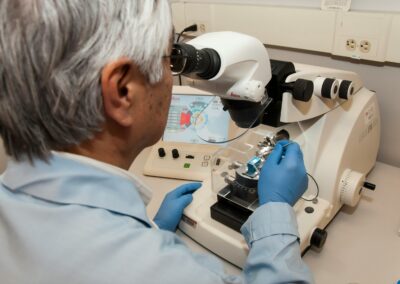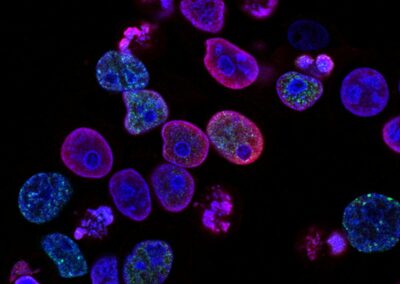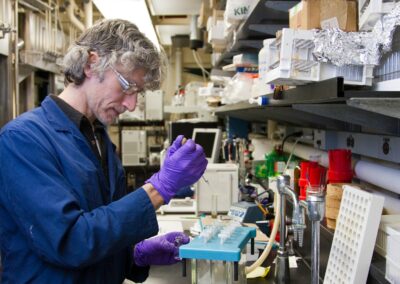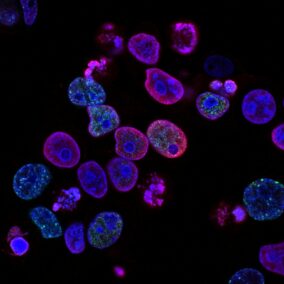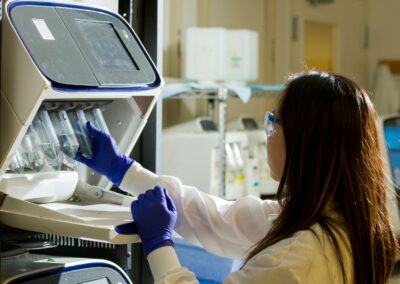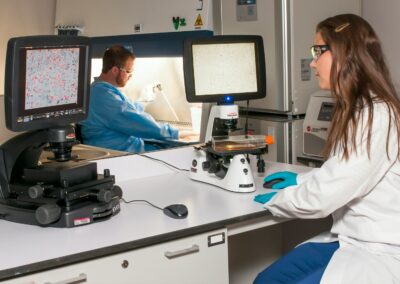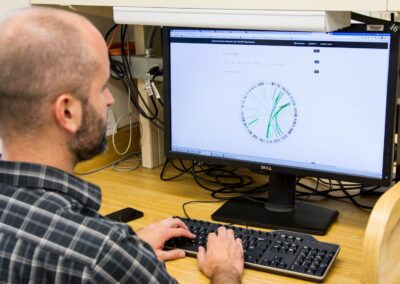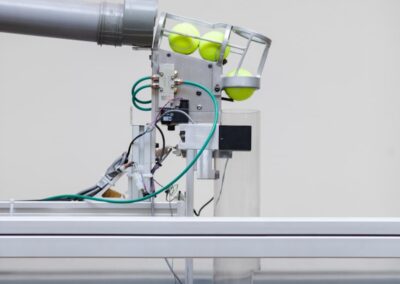The Evolution of CRISPR Technology
Understanding CRISPR: A Revolutionary Genetic Tool
CRISPR (Clustered Regularly Interspaced Short Palindromic Repeats) has emerged as a groundbreaking technology in the field of genetic engineering. Its ability to precisely edit genes has revolutionized biotechnology, providing unprecedented opportunities for scientific advancements. Originally discovered in bacteria as a part of their immune defense mechanism, CRISPR has been harnessed by scientists to make targeted modifications to the DNA of living organisms.
The scientific community has made significant strides in refining CRISPR technology, making it more efficient and accessible. The key breakthroughs that have enhanced CRISPR’s capabilities include the development of more accurate Cas enzymes, such as Cas9 and Cas12a, which act as molecular scissors to cut DNA at specific locations. This precision allows for targeted gene editing with minimal off-target effects, making CRISPR a powerful tool for research and therapeutic applications.
In regions like Saudi Arabia and the UAE, which are known for their focus on cutting-edge scientific research, CRISPR technology has gained considerable attention. Researchers in these countries are exploring its potential to address genetic disorders and improve agricultural productivity. The ability to edit genes with high precision opens up possibilities for creating disease-resistant crops and developing gene therapies for inherited conditions.
CRISPR and Its Role in Biotechnology
CRISPR’s impact on biotechnology is profound, extending beyond basic research to practical applications in medicine, agriculture, and industry. One of the most notable achievements is its use in developing gene therapies for genetic disorders. By correcting mutations at the DNA level, CRISPR holds the potential to cure diseases that were previously considered untreatable. This has significant implications for healthcare, particularly in regions like Riyadh and Dubai, where advanced medical research is a priority.
The agricultural sector also stands to benefit immensely from CRISPR technology. By making precise modifications to the genomes of crops, scientists can enhance their nutritional value, improve resistance to pests and diseases, and increase yield. This is particularly important for regions with challenging climatic conditions, such as the Middle East. The ability to create crops that can thrive in arid environments can contribute to food security and sustainability.
Moreover, CRISPR is being utilized in industrial biotechnology to engineer microorganisms for the production of biofuels, pharmaceuticals, and other valuable compounds. The versatility of CRISPR allows for the customization of microbial metabolic pathways, optimizing the production of desired substances. This has the potential to transform industries by providing more efficient and sustainable manufacturing processes.
Ethical Considerations and Future Prospects
While the scientific breakthroughs in CRISPR technology are promising, they also raise important ethical considerations. The ability to edit the human genome, for instance, brings up questions about the potential for unintended consequences and the ethical implications of germline editing, where changes can be passed on to future generations. It is crucial for policymakers and scientists to work together to establish guidelines that ensure the responsible use of CRISPR technology.
In the UAE and Saudi Arabia, where technological and ethical standards are high, there is a concerted effort to balance innovation with ethical considerations. These countries are investing in regulatory frameworks that promote the safe and ethical use of CRISPR while encouraging scientific advancements. This approach ensures that the benefits of CRISPR can be realized without compromising ethical standards.
The future of CRISPR technology is bright, with ongoing research aimed at enhancing its precision and expanding its applications. Innovations such as base editing and prime editing are pushing the boundaries of what is possible with gene editing. These advancements promise to make CRISPR even more versatile and efficient, paving the way for new therapeutic strategies and biotechnological applications.
Real-World Applications and Implications
CRISPR in Medicine: Transforming Therapeutics
CRISPR technology has the potential to revolutionize medicine by providing new ways to treat genetic disorders. In recent years, there have been successful clinical trials using CRISPR to treat conditions such as sickle cell anemia and beta-thalassemia. These diseases, which are caused by specific genetic mutations, can be corrected at the DNA level using CRISPR, offering the possibility of a permanent cure.
In the context of Saudi Arabia and the UAE, where genetic disorders are relatively prevalent due to consanguineous marriages, CRISPR-based therapies could have a profound impact. Researchers in these regions are actively exploring the use of CRISPR to develop gene therapies tailored to the genetic makeup of their populations. This personalized approach to medicine holds great promise for improving health outcomes and reducing the burden of genetic diseases.
Furthermore, CRISPR is being investigated for its potential to combat infectious diseases. By targeting the genomes of pathogens, CRISPR can be used to disrupt their ability to replicate and cause disease. This approach is being explored for viruses like HIV and hepatitis B, where traditional treatments have limitations. The ability to directly edit viral DNA offers a new avenue for developing antiviral therapies.
Advancements in Agriculture and Food Security
The application of CRISPR in agriculture is revolutionizing the way we approach food production. By making precise genetic modifications, scientists can develop crops that are more resilient to environmental stresses, such as drought and heat. This is particularly relevant for regions like the Middle East, where water scarcity and high temperatures pose significant challenges to agriculture.
For instance, researchers are using CRISPR to create drought-resistant varieties of staple crops such as wheat and rice. These crops are engineered to maintain high yields under adverse conditions, ensuring food security in regions with limited water resources. Additionally, CRISPR is being used to enhance the nutritional content of crops, addressing malnutrition and improving public health.
In Dubai and Riyadh, where urban agriculture and sustainable farming practices are gaining traction, CRISPR technology offers a way to optimize crop production in controlled environments. Vertical farming and hydroponics, combined with genetically optimized crops, can produce high yields in small spaces, reducing the dependence on traditional farming methods and contributing to food sustainability.
Future Directions and Innovations
The future of CRISPR technology is full of exciting possibilities. One area of active research is the development of CRISPR-based diagnostics. These tools can detect genetic mutations and pathogens with high precision, enabling early diagnosis and personalized treatment plans. This has significant implications for healthcare systems, allowing for more proactive and targeted interventions.
Another promising area is the use of CRISPR in environmental conservation. Scientists are exploring the potential of CRISPR to control invasive species, protect endangered species, and restore ecosystems. By making precise genetic modifications, it is possible to alter the traits of species in a way that promotes environmental sustainability.
In the realm of industry, CRISPR is driving innovations in synthetic biology. Researchers are using CRISPR to engineer microorganisms that can produce biofuels, biodegradable plastics, and other valuable materials. This approach not only enhances the efficiency of production processes but also reduces the environmental impact of manufacturing.
In conclusion, CRISPR technology represents a significant leap forward in genetic engineering, with far-reaching implications for medicine, agriculture, and industry. The advancements in materials science and biotechnology that underpin CRISPR’s capabilities are transforming the way we approach scientific and technological challenges. As Saudi Arabia, the UAE, and other regions continue to invest in CRISPR research and applications, the potential for innovation and positive impact is immense. By harnessing the power of CRISPR, we can pave the way for a future where genetic diseases are curable, food security is enhanced, and sustainable industrial practices are the norm.
#CRISPRGeneticEngineeringBreakthroughs #GeneticEngineering #CRISPRTechnology #Biotechnology #HealthTechnology #AIinGenetics #SaudiArabia #UAE #Riyadh #Dubai #ArtificialIntelligence #Blockchain #ExecutiveCoaching #GenerativeAI #ModernTechnology #BusinessSuccess #LeadershipSkills #ManagementSkills #ProjectManagement


